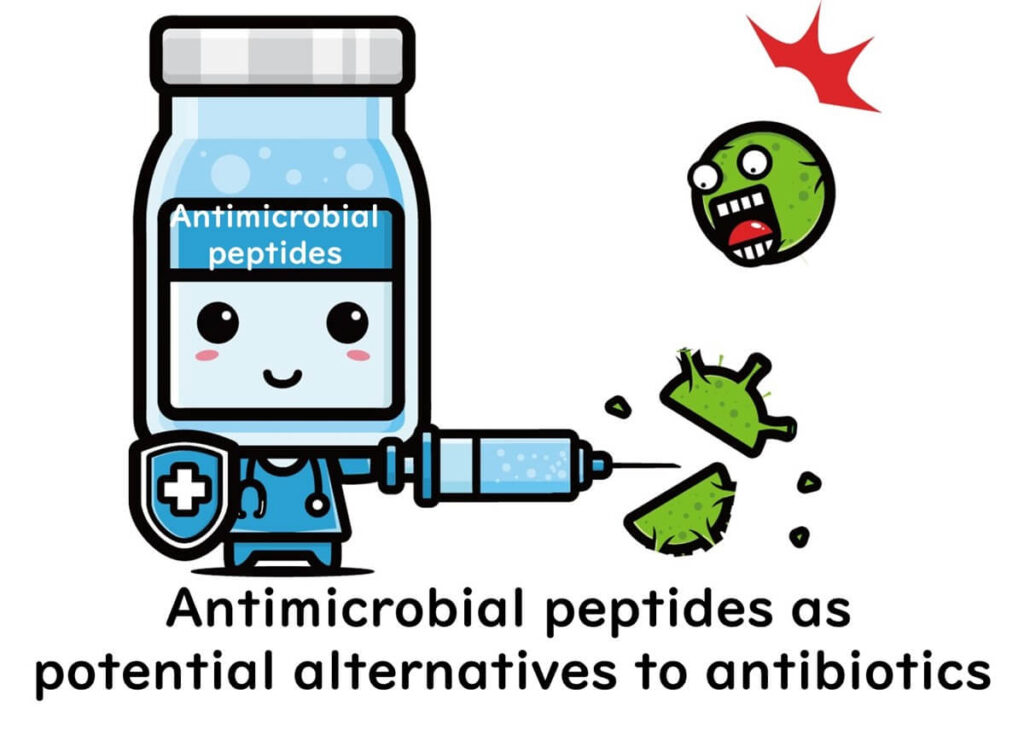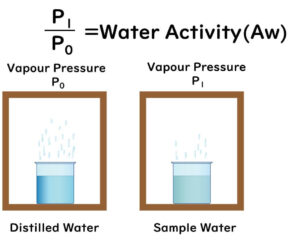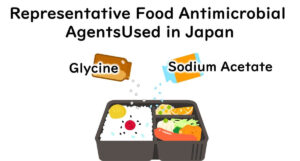Polylysine and protamine, polypeptides comprising 25 to 30 L-lysine and arginine amino acids respectively, are transforming the landscape of microbial inhibition. Initially researched in Japan during the late 1970s for their food preservation properties, these polycations have been pivotal in combating both Gram-negative and Gram-positive bacteria. Their profound impact extends beyond the culinary world into the medical field, where they are now being explored as promising alternatives to conventional antibiotics amidst rising antibiotic resistance.
Polylysine
Polylysine is a polypeptide made up of 25 to 30 L-lysine amino acids linked together. The amino group in lysine’s side chain is positively charged, making the entire polypeptide positively charged. This is why polylysine is a cationic peptide. The positive charge of the cation plays a significant role in the antimicrobial mechanism against microbes, which we will explore further. Polylysine exhibits antimicrobial activity against both Gram-negative and Gram-positive bacteria.
The application of polylysine as an antimicrobial agent in food has been deeply researched by Japanese scientists from the late 1970s to the early 1980s. This foundational research paved the way for its eventual use as a food preservative. Although originating in Japan, it was approved as a food additive in the United States by the FDA in 2003. Since then, it has been used in certain foods in the US and South Korea. Moreover, since 2015, numerous researchers in China have been actively publishing papers on the preservation of food using polylysine and other cationic polypeptides. In addition, as will be discussed later, there has been a global resurgence of interest in the antimicrobial properties of cationic peptides in the medical field.
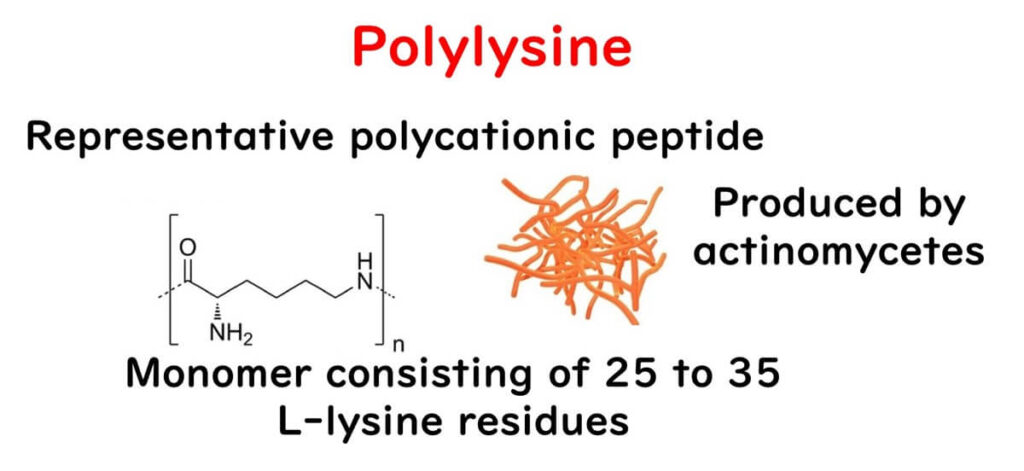
Protamine (Protamine Sulfate)
Protamine is a polycationic peptide extracted from the milt of herring or salmon. Its main component is the basic amino acid arginine, consisting of 32 to 33 amino acids. Like polylysine, protamine is positively charged. It is also referred to by another name, protamine sulfate. In the context of salmon or herring sperm, protamine plays a crucial role in the precise folding of DNA within the nucleus. Protamine is positively charged, while DNA has negatively charged phosphate groups. This allows protamine to bind strongly to DNA, facilitating the precise folding of DNA.

Despite its biological role, protamine’s properties have led to its exploration as an antimicrobial agent in food. A practical application was developed in 1987 through a joint research project between Kagoshima University and Ueno Pharmaceutical, and it is now used in Japan and South Korea as well.
Antimicrobial Mechanism of Polypeptides
Both polylysine and protamine are polycations with a positive charge. This positively charged characteristic is deeply involved in the antimicrobial mechanism against bacteria. This is because positively charged compounds adhere to the negatively charged surfaces of microbes, much like a guided missile homing in on its target and piercing through microbial cells. For a deeper dive into why microbial cells are negatively charged, please refer to another article:
The Food Factory - Quaternary Ammonium Salts (Benzalkonium Chloride)
Once these polycations pierce the microbial cell surface, they disrupt the cell membrane. As a result, intracellular substances leak out of the cell. Another aspect of polylysine’s antimicrobial action is its ability to cause microbial cells to clump together when they adhere to polylysine, further inhibiting their growth. Additionally, these cations can also bind to negatively charged molecules such as DNA, thereby proposing a mechanism that inhibits DNA function. However, as previously discussed, from a practical perspective concerning food microbiology, once the cell membrane is disrupted, the normal function of the microbial cells decreases, and their proliferation is inhibited. Thus, for practical purposes, it’s sufficient to understand that damage to the cell membrane is the primary concern.
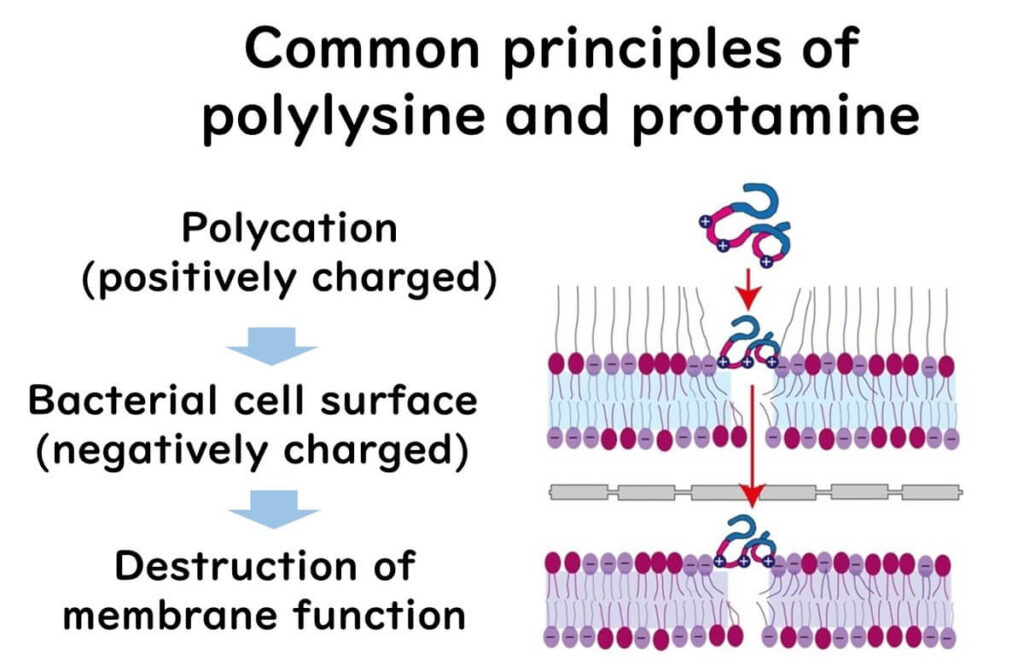
Advantages of Polypeptides
The advantages of using polycationic peptides like protamine and polylysine as food preservatives can be considered as follows:
- First, unlike organic acids, they are less affected by pH levels (the antimicrobial action of organic acids only becomes effective when the pH is lowered).
Refer to the article on the antimicrobial action of organic acids and their relationship with pH in "Microbial Growth and Death and pH"
- Second, being peptides of about 25 amino acids, they are less likely to undergo protein denaturation which is common with proteins (typically around 300 amino acids in length) whose three-dimensional structures may permanently alter when agitated by heat. However, the simpler structure of peptides around 25 units in length can more easily revert to their original form.
For those interested in the basics of protein denaturation, see the article on heat sterilization of food (Pasteurization)
- Third, these peptides are broken down into amino acids by protein-digesting enzymes in the human intestine, meaning they are not absorbed in their peptide form. The breakdown products are amino acids like lysine, which are non-toxic to the human body.
- Fourth, these peptides are not synthetically made but derived from natural sources.
On the other hand, a common drawback of polycationic antimicrobial substances is that if there are anions in the food (such as acidic polysaccharides or proteins with many carboxyl groups), their effectiveness can be reduced due to adsorption through positive and negative interactions.
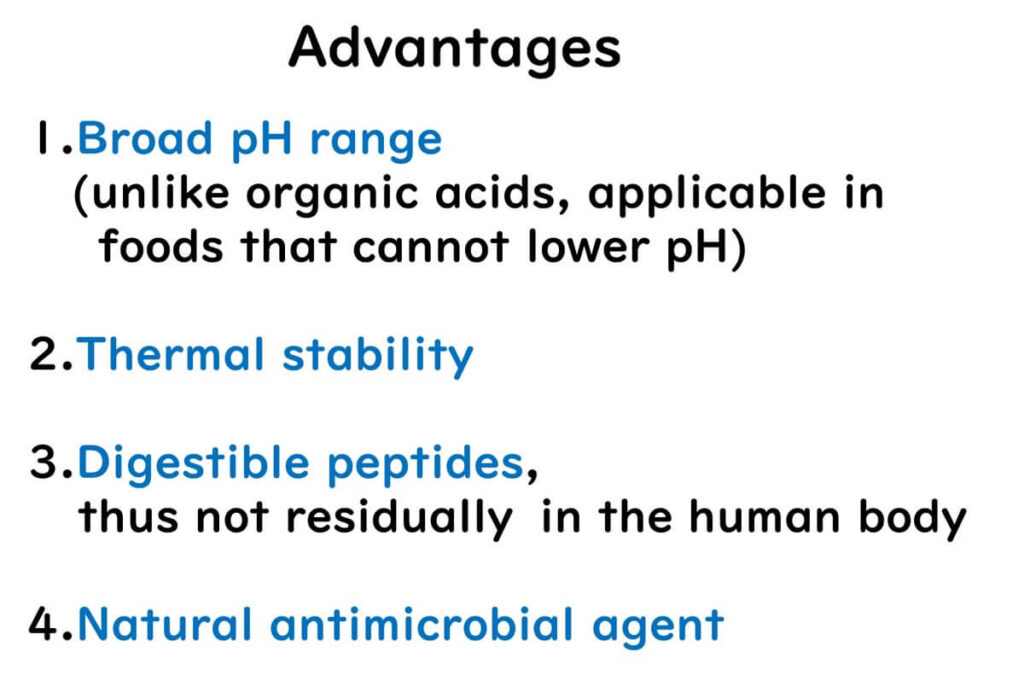
Antimicrobial Peptides as a Widespread Biological Defense
These polypeptides essentially serve as natural antimicrobials for nearly all organisms on Earth. From cockroaches to dogs to plants, every organism utilizes antimicrobial polypeptides to prevent microbial invasion within their bodies.
The mechanism involves the negatively charged surfaces of bacterial cells. As previously described, positively charged polypeptides act like guided missiles, targeting and piercing the negatively charged bacterial cell surfaces, thereby disrupting microbial cell membranes and exerting antimicrobial effects. An intriguing question is why these polypeptides, produced by organisms for self-defense, do not attack their own cells. Both bacteria and other organisms have cell membranes composed of phospholipids; however, the surfaces of bacterial cells are negatively charged, while host cell membranes are often neutral or positively charged. The alcohol parts attached to the phospholipids in animal and plant cells are typically neutral or positive in charge, making it less likely for polycations to attack non-bacterial cell membranes.
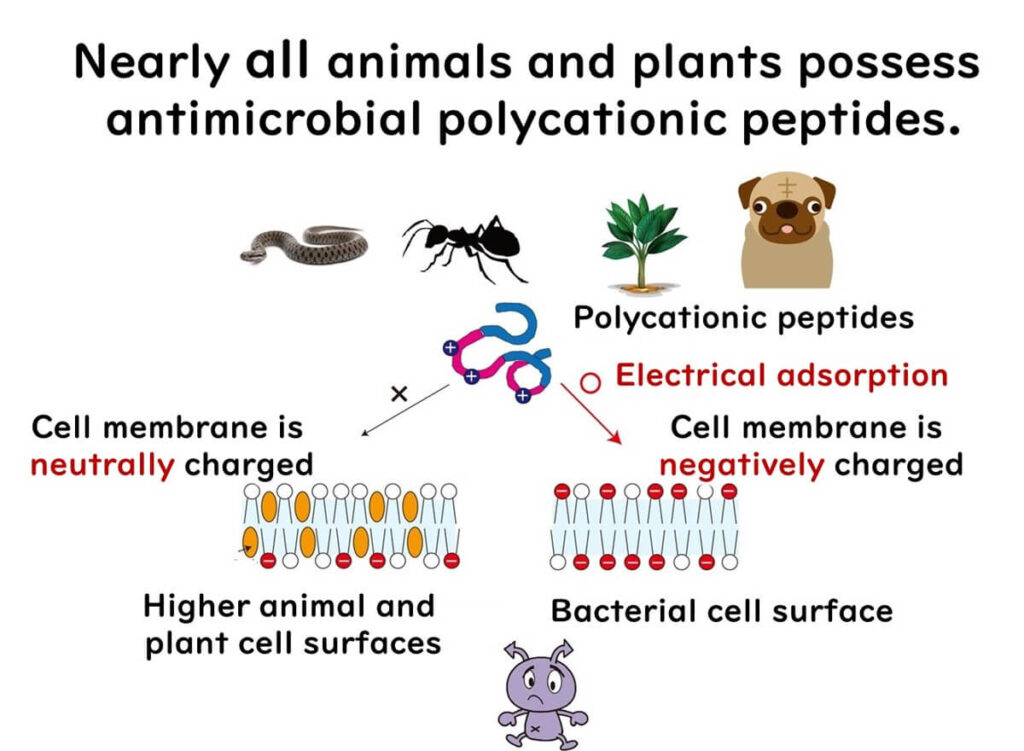
Polypeptides as Alternatives to Antibiotics Now Gaining Attention
Moving slightly away from the food industry, these polypeptides, such as protamine and lysine, are currently garnering attention in the medical field. The rise of antibiotic-resistant bacteria is a major reason for this shift. Over the past 50 years, the emergence of bacteria resistant to antibiotics has been recognized as a potential pandemic threat, following the novel coronavirus. Antibiotic-resistant infections are increasingly likely to cause life-threatening infections not only in immunocompromised individuals but also in post-surgical recovery and other medical contexts. By 2050, it is estimated that deaths due to antibiotic-resistant bacteria could surpass those caused by cancer. Despite the rapid appearance of antibiotic-resistant bacteria globally, no new antibiotics have been discovered in the past 20 years. Thus, there is an urgent need in the medical field for the development of new antimicrobial agents as alternatives to antibiotics.
One such promising candidate is the naturally occurring antimicrobial polypeptides. Since 2017, over 5000 papers have been published on the antimicrobial properties of polypeptides. Protamine and polylysine, initially developed as food preservatives through meticulous Japanese research in the 1970s and 1980s, are now being recognized globally as potential alternatives to antibiotics. This highlights a fascinating turn of events where food preservation research has catalyzed innovations in addressing one of the most critical health challenges of our time.
